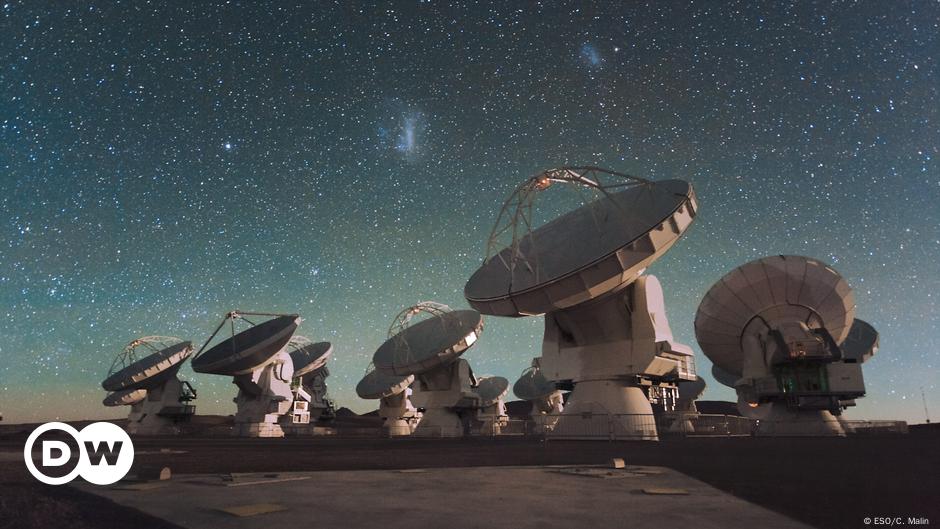Using the Atacama Large Millimeter/Submillimeter Array (ALMA), the world's largest astronomical project based in Llano de Sajnandor, Chile, a team of researchers has discovered a galaxy that challenges current knowledge of the formation of these systems.
Last Monday (10/7/2024), the European Southern Observatory (ESO) associated with the ALMA project, named REBELS-25, presented a new galaxy “ordered” into current galaxies, reflecting how the universe was “only 700 million years old”.
Considered a “primitive galaxy,” this type is generally considered to have a more chaotic appearance, but REBELS-25 is similar in shape to the Milky Way, characterized by a rotating disk with structures defined as spiral arms.
“These irregular primitive galaxies are merging with each other and forming into smooth shapes at an incredible speed. Current theories suggest that a galaxy should be as regular as our Milky Way – a rotating disk with ordered structures like spiral arms – , billions of years. Evolution must have passed” insists in a statement.
“However, the detection of REBELS-25 calls this time scale into question,” says the company, based in Garching, Bavaria, Germany.
The challenge of understanding the universe
The study was accepted for publication Monthly Notices of the Royal Astronomical SocietyAstronomers have discovered that REBELS-25 is the most distant rotating disc galaxy ever discovered. According to the press release, “The ordered rotation of REBELS-25 was unexpected when the light reaching us from this galaxy was only five percent of its current age (13.8 billion) when the universe was 700 million years old. .
“Seeing a galaxy with many similarities to our Milky Way, which is strongly dominated by rotation, challenges our understanding of how quickly galaxies in the early universe formed into the ordered galaxies of today's universe,” says Leiden University doctoral student Lucy Rolland. (Netherlands) and first author of the study in the same press release.
ESO researchers discovered the existence of REBELS-25 before thanks to ALMA, but the images they had did not reveal as much about this early galaxy as they do now.
Located 5,000 meters above sea level in Chile's Atacama Desert, ALMA, the world's largest instrument of its kind, has been in operation for more than a decade; It helped produce the first photograph of a black hole and revealed many secrets of the sky.
aa (efe, European Southern Observatory)





